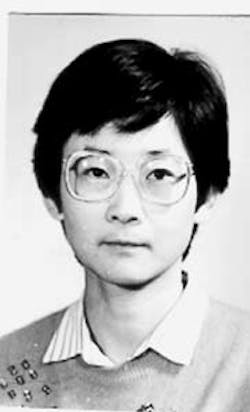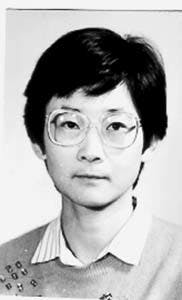Technology New correlations predict physical properties of elemental sulfur
Xiaoshan Shuai, Axel Meisen
University of British Columbia
Vancouver
Until now, elemental sulfur's physical properties have not been systematically correlated. Simple tools for predicting these properties are necessary, especially for engineering calculations, because sulfur is widely used industrially.
Newly developed correlations use temperature to estimate sulfur's density, specific heat, vapor pressure, viscosity, and thermal conductivity. In Claus plants:
- Sulfur densities and specific heats are used in catalytic converter and reheater calculations.
- Thermal conductivities and specific heats are used in condenser calculations.
- Vapor pressures are used in dew point calculations.
Other uses for these correlations include sulfur pelletizers, slaters, meters, and liquid sulfur storage tanks.
There are two stable crystalline forms of solid sulfur: rhombic (a-sulfur) and monoclinic (b-sulfur). At atmospheric pressure, rhombic sulfur is stable at temperatures up to 368.7 K., where transition to mono-
clinic sulfur occurs. Monoclinic sulfur is stable between 368.7 K. and its melting point, 392.1 K.
The most striking feature of liquid sulfur is the marked anomaly of its viscosity-temperature behavior at about 432 K. The commonly accepted explanation for this phenomenon, to be described later, is based on the breakage and subsequent polymerization of the ring structures that prevail at lower temperatures.1 2
At atmospheric pressure, sulfur boils at 717.8 K. It has been shown that sulfur vapor is primarily a mixture of S8, S6, and S2, and equilibrium among the various species is attained quite rapidly in the vapor state.3
In this study, correlations for the properties of sulfur in the solid, liquid, and vapor states have been determined as a function of temperature only. The dependency on pressure is comparatively weak and has been disregarded.
Density
The temperature dependency of the density of solid sulfur is very weak, and no special correlations are warranted. The densities of rhombic and monoclinic sulfur are about, respectively, 2,070 and 1,960 kg/cu m.4
The correlations for the density of liquid sulfur are based on the measurements reported by Maston and Kellas.5 6 As shown by Fig. 1(32912 bytes), the density of liquid sulfur decreases linearly with temperature, except in the range of 422-462 K., where structural changes occur in the sulfur rings.
Three equations were developed, reflecting the different temperature ranges stated earlier (Equations 1-3(71492 bytes), see equations and nomenclature).
Data on the specific volume were reported by West.7 West estimated the volume of each molecular species (S8, S6, and S2) using the ideal gas law, then combined them as shown in Equation 4(71492 bytes).
The density of sulfur vapor at atmospheric pressure was found to fit Equation 5(71492 bytes). Fig. 2(24171 bytes) provides graphic representation of predictions based on Equation 5(71492 bytes) and results previously reported in the open literature.
Surface tension
Fanelli reported surface tension measurements for highly purified sulfur.8 Fanelli found that surface tension decreases linearly with temperature, and that there is a distinct discontinuity at about 432 K. At temperatures greater than 432 K., the decrease is more gradual.
Equations 6 and 7(71492 bytes) were found to represent Fanelli's data well.2 The effectiveness of Equations 6 and 7(71492 bytes) is shown in Fig. 3(26995 bytes).
Vapor pressure
Vapor pressure data for rhombic and monoclinic sulfur were reported by Neumann.9 As shown by Fig. 4(28037 bytes), the vapor pressures of both solid forms change linearly with the logarithm of temperature (Equations 8 and 9(71492 bytes).
The discontinuity of the vapor pressure at 368 K. is caused by the change in crystalline form.
The measurements of West and Menzies were utilized to develop the expression for the vapor pressure of sulfur (Equation 10(71492 bytes).10 By contrast, West and Menzies used Biot's equation, which has five constants (Equation 11(71492 bytes).
Equation 10(71492 bytes) is simpler than Equation 11(71492 bytes) and provides satisfactory agreement with the experimental data (Fig. 5(24546 bytes). The predictions of West and Menzies also are shown in Fig. 5, for comparison.
Viscosity
Bacon and Fanelli measured the viscosity of highly purified liquid sulfur (Fig. 6(30674 bytes).11 12 From the melting point up to a temperature of about 432 K., the viscosity of liquid sulfur decreases gradually with rising temperature. At temperatures greater than 432 K., the viscosity increases sharply with temperature.
At 461 K., the viscosity reaches a maximum because of the rupture of S8 rings into chains of varying lengths. At temperatures greater than 461 K., liquid sulfur reverts to more normal behavior and its viscosity falls again with temperature.
Equations 12-14(71492 bytes) were found to fit the experimental data well. Predictions based on these equations, and corresponding experimental data, are presented in Fig. 6.
Dalin and West measured the viscosity of sulfur vapor at its normal boiling point (717.8 K.) and found that it agreed well with the value obtained from the Sutherland equation used by Licht and Stechert.13 14 In the latter method, the viscosity of sulfur vapor was determined as a function of molecular composition and reduced temperature.
It should be noted that the viscosities at temperatures greater than 717.8 K. were estimated at 1 atm total pressure, while those at temperatures below the normal boiling point were based on the vapor pressure of sulfur at the corresponding temperatures.
Assuming the method of Licht and Stechert is applicable, Equation 15(71492 bytes) was found for viscosity. A comparison with experimental data is given in Fig. 7(25615 bytes).
Specific heat
The specific heat of solid sulfur was reported by Eastman and McGavock.15 Their experimental data are shown in Fig. 8(30448 bytes), together with the predictions based on correlations obtained in this work (Equations 16 and 17(71492 bytes).
It should be noted that, in Fig. 8, the data at temperatures less than 368 K. for monoclinic sulfur indicate unstable sulfur.
The specific heat of liquid sulfur also exhibits major changes with temperature in the vicinity of 431 K. Two expressions were developed, based on the measurements reported by Lewis and Randall (Equations 18 and 19(71492 bytes).16
The correlated results are plotted in Fig. 9(26836 bytes).
Unlike the viscosity and thermal conductivity of sulfur vapor, which vary with temperature in a sinusoidal fashion between 800 and 1,000 K., the specific heat exhibits a large increase between 750 K. and 910 K. Because of a lack of experimental data, Equation 20(71492 bytes) is based on results given by Stull, who calculated the specific heat in terms of the molecular composition of sulfur vapor and the specific heats of the molecular species.17
Stull's data, and predictions based on Equations 20(71492 bytes), are plotted in Fig. 10(26232 bytes).
Thermal conductivity
The thermal conductivity of solid sulfur was reported by Kaye and Higgins, and shows a discontinuity at the crystalline transition temperature (Fig. 11(26036 bytes).18
The temperature range over which the thermal conductivity of monoclinic sulfur was measured is insufficient to reveal, with certainty, its dependency on temperature. For this reason, only a correlation for rhombic sulfur was developed (Equation 21(71492 bytes), Fig. 11(26036 bytes)).
Kay and Higgins also measured the thermal conductivity of liquid sulfur.18 Unlike viscosity and specific heat, the thermal conductivity of liquid sulfur does not exhibit an abrupt increase in the vicinity of 432 K. As shown by Fig. 12,(25555 bytes) however, a change in the region between 432 and 445 K. (experimental values) reflect the structural change of liquid sulfur.
The thermal conductivity of liquid sulfur is correlated by Equation 22(71492 bytes).
Like most other properties of sulfur vapor, the thermal conductivity data available in the literature are based on calculations rather than experiments. West utilized Equation 23(71492 bytes).19
Values for overall thermal conductivity then were determined from the conductivity of each species and the molecular composition of the sulfur vapor. Based on these data, Equation 24(71492 bytes) was found to be applicable at atmospheric pressure.
The results of this Equation and the relevant data are plotted in Fig. 13(27700 bytes).
References:
- Powell, R.E., and Eyring, H., J. Am. Chem. Soc., Vol. 65, 1943, pp. 648-54.
- Tuller, W.N., The Sulfur Data Book, McGraw-Hill Book Co. Inc., New York, 1954.
- Kelley, K.K., "Contributions to the Data on Theoretical Metallurgy," VII. The Thermodynamic Properties of Sulfur and its Inorganic Compounds, U.S. Bur. Mines Bull., 1937, p. 406.
- International Critical Tables, McGraw-Hill Book Co. Inc., New York, pp. 1926-30.
- Maston, R.F., Freeport Sulfur Co., unpublished report.
- Kellas, A.M., J. Chem. Soc., Vol. 113, 1918, pp. 903-22.
- West, J.R., Ind. Eng. Chem., Vol. 42, 1950, pp. 713-19.
- Fanelli, R., J. Am. Chem. Soc., Vol. 72, 1950, pp. 4016-18.
- Neumann, Kurt, Z. Physik. Chem., Vol. A171, 1934, pp. 416-20.
- West, W.A., and Menzies, A.W.C., J. Phys. Chem., Vol. 33, 1929, pp. 1880-92.
- Bacon, R.F., and Fanelli, R., J. Am. Chem. Soc., Vol. 65, 1943, pp. 639-48.
- Fanelli, R., J. Am. Chem. Soc., Vol. 67, 1945, pp. 1832-34.
- Dalin, G.A., and West, J.R., J. Phys. & Colloid Chem., Vol. 54, 1937, pp. 1215-21.
- Licht, W. Jr., and Stechert, D.G., J. Phys. Chem., Vol. 48, 1944, p. 23.
- Eastman, E.D., and McGavock, W.C., J. Am. Chem. Soc., Vol. 59, 1937, pp. 145-51.
- Lewis, G.N., and Randall, M., J. Am. Chem. Soc., Vol. 33, 1911, p. 476.
- Stull, D.R., Ind. Eng. Chem., Vol. 41, 1949, pp. 1968-73.
- Kaye, G.W.C., and Higgins, W.F., Proc. Roy. Soc. (London), Vol. A122, 1929, pp. 633-46.
- West, J.R., Phys. & Colloid Chem., Vol. 55, 1951, pp. 402-05.
- McAdams, W.H., Heat Transmission, 2nd ed., McGraw-Hill Book Co. Inc., New York, 1942, p. 21.
The Authors
Xiaoshan Shuai is a research associate in the department of chemical engineering at the University of British Columbia, Vancouver. She held similar appointments at the University of Nancy I, France, and at the University of Alberta. Her research has included heat and mass transfer, fluid dynamics, rheology, and modeling of ethylene diamine plants, nuclear reactor components, and portable pressure swing adsorption processes. She has a BS in chemical engineering from Tianjin University, China, and a PhD in industrial process engineering from the University of Technology of Compiegne, France.
Axel Meisen is dean of applied science and professor of chemical engineering at the University of British Columbia. His primary research interests are natural gas processing, sulfur production, and sulfur utilization.
Meisen has served as consultant to universities, professional organizations, government, and industry on hydrocarbon processing, engineering education, and engineering research. He has a BS in chemical engineering from Imperial College, London, an MS from California Institute of Technology, Pasadena, Calif., and a PhD from McGill University, Montreal. He is a fellow of the Chemical Institute of Canada and the Canadian Academy of Engineering.
Reprints of any OGJ article or advertisement may be purchased from Reprint Dept., PennWell Publishing Co., Box 1260, Tulsa, OK 74101, 918-835-3161.
Minimum order 100.
Copyright 1995 Oil & Gas Journal. All Rights Reserved.

